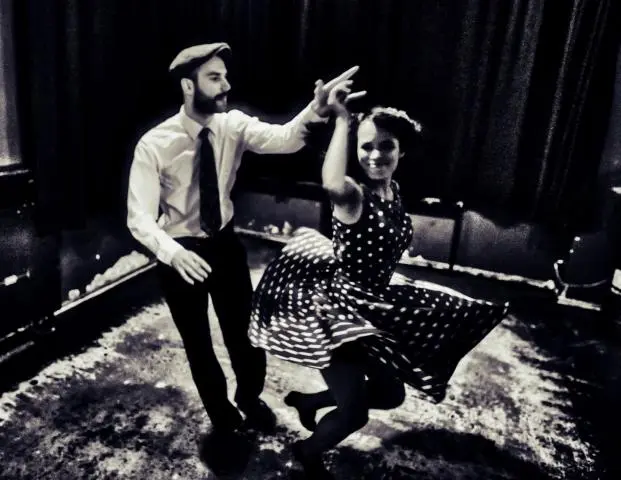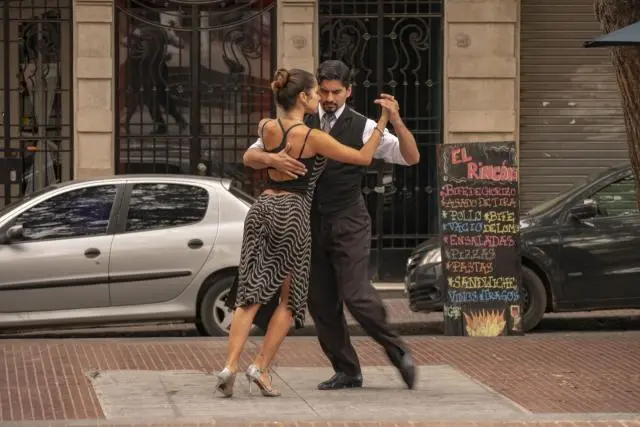Jazz Dance in Canada
As diverse as the music
What is Jazz Dance?
Jazz dance is a dynamic and expressive dance style that emerged at the turn of the 20th century, characterized by a blend of traditional African American dance, ballet, and jazz music. It encompasses a wide range of movements, from the Charleston and the Lindy hop to modern, theatrical, and contemporary styles. Jazz dance is known for its sharp, rhythmic movements, flashy turns, jumps, and trendy choreography. It has a rich history in American dance culture and remains an essential part of musical theater, dance schools, and various performance venues. The style has evolved over time, influenced by prominent figures such as Bob Fosse, Katherine Dunham, and Luigi. Today, jazz dance continues to thrive in various forms, from music videos to dance companies, showcasing its enduring popularity and versatility.
The History of Jazz Dance
Jazz Dance is as diverse and multifaceted as the music that gave it its name. Its origins lie in the ritual dances of Africa, brought to America by slaves. There, various musical influences blended. In the late 19th century, a distinctive, Afro-American music genre emerged in New Orleans: jazz. People started dancing to these captivating sounds at parties. They didn't follow a fixed style but improvised, letting the rhythms carry them. Their energetic movements inspired choreographers of the time, such as Katherine Dunham, Jake Cole, and Matt Mattox. They combined the exotic dance movements with familiar elements from ballet and modern dance, developing new techniques. Jazz Dance established itself as an independent dance style and conquered the stages of Broadway. Fred Astaire and Gene Kelly brought it to the big screen. It gained worldwide popularity with the musical film "West Side Story," choreographed by Jerome Robbins. Since the mid-20th century, Jazz Dance has become an integral part of musicals and dance films.
Jazz Dance – Characteristics and Styles
Very little is typical for Jazz Dance. It is extremely variable and challenging to define. Numerous trends flow into it, continuously changing it. Even jazz plays hardly any role today; instead, dancing is mainly done to pop, funk, and hip-hop. However, there are two characteristic features hidden behind the somewhat cumbersome terms Polyzentrik and Polyrhythmik.
Polyzentrik is the underlying movement principle. In Jazz Dance, the body does not form a uniform line but is divided into several movement centers. The individual body parts are isolated and moved independently. Isolation is the most important technique in jazz dance. Polyrhythmik means the simultaneous occurrence of several different rhythms. For example, the shoulders move to one rhythm while the legs follow another beat. Polyzentrik and Polyrhythmik are traditional components of African dance, which still has a significant influence today. This is also evident in the specific body posture of jazz dancers with a low center of gravity and frequently bent knees. Moreover, Jazz Dance is very open to experiments. The broad spectrum of its various styles demonstrates its diversity, ranging from classic musical jazz dance to contemporary and lyrical styles, to street and funky jazz.
6 Jazz Dance Moves
Jazz dance is an expressive form of dance with many types of dance steps and footwork, each with a unique flare and technique. Here are a few dance moves:
-
Pas de bourrée: This is a sequence of footsteps used to transition from one dance move to the next. Completing a full pas de bourrée begins by stepping back. Dancers then step to the side and back to the front. The movement is often repeated quickly to travel across the dance floor.
-
Ball change: A ball change uses the balls of the feet to shift the dancer’s weight from one foot to the next. Like the pas de bourrée, you can use a ball change to transition between dance moves. Dancers transfer their weight to the ball of one foot, and then step forward with the other foot.
-
Pirouette: A pirouette is when a dancer turns on one foot. While one leg remains planted on the ground, the other leg spins, turning the dancer’s body.
-
Jazz walk: Jazz walks are a stylish form of dance walking that use a tiptoeing step to turn the walk into a cat strut. Jazz walks are ways to transition from one movement to the next, or you can use them as a statement dance move on their own.
-
Jazz square: The jazz square is a versatile and foundational step in jazz dance. This movement involves four steps that form the shape of a square on the dance floor. You can do jazz squares rapidly or slowly depending on how the dancer wants to exaggerate and shape the movement.
-
Flying Charleston: Dance partners face one another to perform the flying Charleston. Dancers move counterclockwise to form a large circle across the dance floor. This dance step allows the dancers to use the entire dance floor.
These moves are essential in jazz dance, showcasing the dynamic and expressive nature of this dance style.
Is Jazz Dance Right for Me?
Jazz Dance is suitable for everyone who desires a versatile dance style and enjoys complex movements. It provides a good foundation: in addition to strength, endurance, and flexibility, it particularly trains body awareness and rhythm. Those who enjoy expressing themselves through dance receive a broad repertoire of techniques that can later be translated into creative choreographies. Enthusiasts can practice "Jazz and Modern Dance" as a sport and compete in national and international championships. Jazz Dance is a powerful, dynamic dance style. It can be performed as a solo, in a duo, or in a group—and above all, it brings a lot of fun.
If you are looking for a suitable dance course or dance partner for a Jazz Dance performance, simply register with Lets-Dance. A personal profile will help you find like-minded individuals in your area.
Shop
Popular blog posts about dancing
Create your dance profile on Lets-Dance
Register your dance school
Top cities
Top dances



